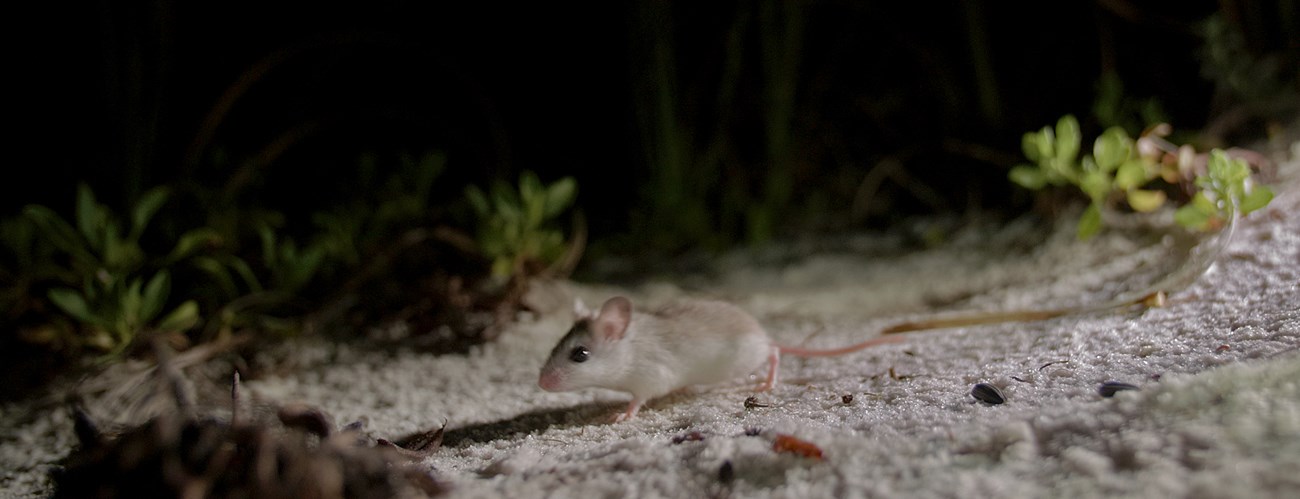
Intro Nature Films The critically endangered Perdido Key Beach Mouse is a rare yet important part of the dune communities of the national seashore. These small-bodied mice have hairy tails with large ears and eyes compared to their body. They are able to fit in the palm of your hand being between 2.7-3.3 inches long excluding the tail and weigh about 13 grams. Their back fur color is dependent on the coloration of the sand dune habitat and can range from grey to dark brown. Their stomach, feet and head are white and their tail is white/ grey.
This species of beach mouse only live on Perdido Key, a barrier island that straddles the Florida and Alabama boundary. These beach mice are mainly found on the Johnson Beach unit of Gulf Islands National Seashore, Gulf State Park and Perdido Key State Park. These mice inhabit beach dunes and coastal scrub habitats where they dig burrows to rest, raise young and store food.
These mice emerge from burrows at night to feed on the seeds and fruit of beach plants as well as insects. Sea oats make up a large portion of their diet but they are also known to eat other dune plants such as bluestem, beach grass, ground cherry, evening primrose, beach pea and dune spurge. Sometimes they store seeds and when left uneaten, these seeds will grow into important plants that help stabilize dunes. Beach mice pair for life and breeding peaks during the winter months. The female can give birth to up to four pips per liter. The burrows they dig are around three feet below the sand with each burrow consisting of an entrance, a main nest chamber and an escape tunnel. These burrows provide habitat for many other species including gopher frogs, camel cricket, and both the black widow and Carolina wolf spiders.Though the Perdido Key Beach Mouse once occupied the entire length of Perdido Key, human activities such as development have fragmented their suitable habitat. Habitat fragmentation limits the area and availability with which this species can live, forage and even find a mate. From their historic range of 16.9 miles of coastal dune habitat, approximately nine fragmented miles of habitat remain. Other threats include large storms or hurricanes, sea level rise, artificial light as well as predation from foxes, raccoons, owls and coyotes. When human developments are near the habitat of this beach mouse, house cats and feral cats become predators as well.
Perdido Key beach mice have been federally protected under the Endangered Species Act since 1985. The biologists at Gulf Islands National Seashore in partnership with FWC, track populations of beach mice every year to track the mouse population on park lands and to determine which specific areas are most frequented by the Perdido Key Beach Mouse. Some ways to help protect these mice are to stay off of dunes and be sure not to step on any plants because they are important sources of shelter and food for the Perdido Key Beach Mouse. Artificial light from beachfront properties, streetlights and automobiles cause a threat to beach mice behavior so regulations prohibit residents from having deck lights.
Documentary: "Little Beach Mouse from the South"Intro to Nature Films and Escambia County, in collaboration with the U.S. Fish and Wildlife Service produced a documentary film called, "Little Beach Mouse from the South." Watch the 26 minute Intro to Nature Films documentary on YouTube to learn more about efforts to save the Perdido Key Beach Mouse. |
Last updated: June 5, 2020
